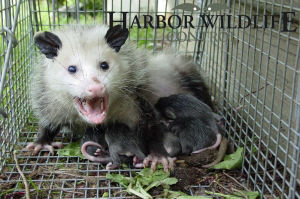
The Virginia Opossum (Didelphis virginiana), commonly known as the North American Opossum, is the only marsupial found in North America north of the Rio Grande. A solitary and nocturnal animal about the size of a domestic cat, it is a successful opportunist and is found throughout Central America and North America east of the Rockies from Costa Rica to southern Ontario (it was also introduced to California in 1910, and now occupies much of the Pacific coast); it seems to be still expanding its range northward. Its ancestors evolved in South America, but were enabled to invade North America in the Great American Interchange by the formation of the Isthmus of Panama about 3 million years ago. It is often seen near towns, rummaging through garbage cans, or lying by the side of the road, a victim of traffic.
